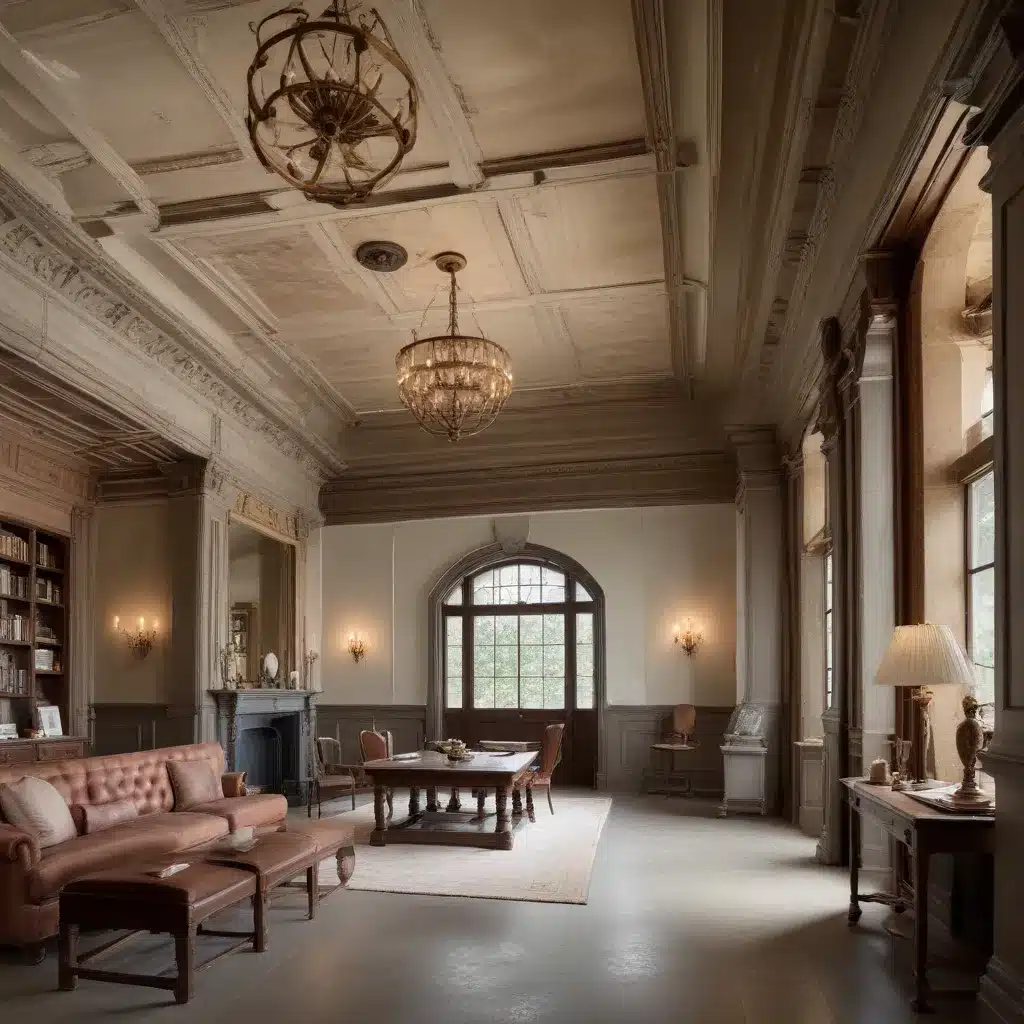
In the ever-evolving urban landscapes of today, the harmonious blending of historic preservation and contemporary design has become a captivating pursuit for architects, urban planners, and design enthusiasts alike. As a tree care specialist at TriCounty Tree Care, I’ve had the privilege of witnessing firsthand the transformative power of weaving the old with the new, creating spaces that not only honor the past but also pave the way for a vibrant future.
Architectural Heritage and Contemporary Design
The art of adaptive reuse has emerged as a driving force in the realm of historic preservation, where the repurposing of existing structures breathes new life into cherished architectural legacies. By retrofitting historic buildings with modern amenities and design elements, architects and designers are able to preserve the cultural significance and material integrity of these structures while adapting them to the needs of contemporary users.
One shining example of this approach can be seen in the transformation of the Department of Education Building in Sydney, Australia, into the luxurious Capella Sydney hotel. The restoration efforts, led by Urbis, Essence Project Management, and Principle Contractors, focused on meticulously refurbishing the heritage-listed building, retaining key features such as the sandstone and marble elements. Collaborating with expert craftsmen, the design team at Make Architects addressed the challenge of restoring and upgrading the heritage marble staircases, seamlessly integrating new marble inserts, brass trims, and glass balustrades that harmonize with the existing structures.
The sympathetic four-storey extension designed by Make Architects further exemplifies the principle of contextual integration, featuring fluted fins and curved glass corners that harmoniously blend with the historic exterior while respecting the building’s architectural integrity. This careful approach to preserving the past while embracing the future has resulted in a captivating fusion of old and new, where the interpretation led by Freeman Ryan Design and UAP Public arts installation communicates the building’s history and past uses, enhancing the guest experience and fostering a deeper appreciation for its cultural heritage.
Contextual Considerations in Design
When integrating historic elements into modern designs, it is essential to consider the architectural styles and periods that have defined a particular location or structure. By understanding the unique characteristics of these bygone eras, designers can create harmonious connections between the past and present, ensuring that the new additions respectfully complement the existing fabric.
The European Parliament’s Konrad Adenauer Building in Luxembourg, designed by architect Sabine Pfefferle of Heinle, Wischer und Partner, exemplifies this approach. The building’s radiant colors and clean lines reflect a harmonious symmetry, bridging the past and the future through its visionary design and precise execution. The façades, with their shimmering geometry and play of lines, create a striking visual dialogue between the contemporary structure and its historical context within the European Quarter.
Principles of Integrative Design
When blending historic elements and contemporary design, architects and designers must carefully navigate the balance between contrast and harmony. The strategic use of transitional design elements can create seamless connections, ensuring that the new additions enhance rather than overwhelm the historic features.
The work of renowned landscape architect James Corner, as showcased in projects like New York’s High Line and Chicago’s Navy Pier, demonstrates this delicate equilibrium. By juxtaposing modern materials and forms with the existing architectural and natural elements, Corner’s designs celebrate the past while embracing the future, inviting visitors to engage with the layered narratives embedded within the spaces.
Materiality and craftsmanship also play a pivotal role in the successful integration of historic and contemporary design. The revival of traditional building techniques, combined with the innovative application of modern materials, can result in captivating hybrid expressions that honor the past while pushing the boundaries of design.
Functional and Spatial Harmonization
Integrating historic structures into contemporary programs often requires a careful consideration of bridging past and present uses. Designers must skillfully repurpose historic spaces to accommodate modern needs, while preserving the essence of their original functions and architectural character.
The Capella Sydney project, for instance, showcases the adaptive reuse of the Department of Education Building’s historic spaces, such as the original marble-clad foyers and the Minister’s Boardroom with its intricate timber joinery. By retaining these significant elements, the design team has not only honored the building’s past but also enhanced the guest experience by fostering a deeper connection to its rich heritage.
Equally important is the consideration of circulation and spatial fluidity when merging historic and contemporary design. Navigating the often-complex layouts of historic structures while ensuring seamless accessibility for modern users requires a delicate balance of preservation and innovation.
Sustainability and Historic Preservation
As the global emphasis on sustainable development continues to grow, the integration of historic preservation and contemporary design has become increasingly vital. Energy-efficient retrofits and the careful selection of sustainable materials can play a crucial role in balancing the preservation of historic integrity with the pursuit of enhanced building performance.
The adaptive reuse of the Department of Education Building in Sydney exemplifies this harmonious approach. By retaining and refurbishing the existing structure, the project team minimized the environmental impact of new construction, aligning with the principles of sustainable urban development.
Furthermore, the lifecycle considerations inherent in historic preservation projects ensure that the restored structures remain adaptable and enduring for generations to come. By maintaining the historic integrity of these buildings while incorporating design strategies that accommodate future needs, architects and designers are shaping urban environments that are both culturally significant and environmentally responsible.
In conclusion, the integration of historic preservation and contemporary design is a captivating and crucial pursuit, one that celebrates the past while paving the way for a vibrant future. By embracing the principles of adaptive reuse, contextual considerations, and sustainable development, architects, urban planners, and designers at TriCounty Tree Care are redefining the boundaries of architectural innovation, creating spaces that are not only visually stunning but also deeply meaningful and environmentally conscious.


